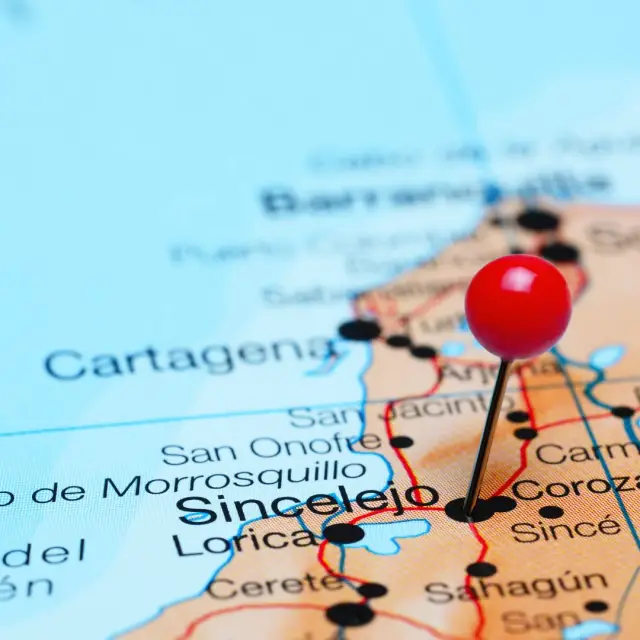The Fiesta de las Corralejas, held in Sincelejo, Colombia, in January, is one of the most emblematic and controversial cultural events in the country. This annual event, which combines tradition, folklore and risk, has become a representation of coastal identity, while generating an intense debate around animal rights and the safety of participants.
Origins and History of the Corralejas
The Corralejas have their origins in the cattle ranching tradition of the Colombian Caribbean region, especially in the departments of Sucre, Córdoba and Bolívar. Since the 18th century, cattle ranches organized celebrations to mark important events, such as the end of the harvest or the commemoration of patron saints. During these events, farmers had the opportunity to demonstrate their bravery by facing bulls in improvised wooden enclosures known as "corralejas."
In Sincelejo, capital of the department of Sucre, the Corralejas acquired particular importance due to the strong cattle-raising roots of the region. The celebration was institutionalized in the mid-twentieth century and, over time, became a large-scale event that attracts thousands of spectators from different parts of Colombia and the world.
Corralejas take place in a ring constructed of wood, where the bulls are given freedom to run while the participants, known as "amateurs" or "aficionados", enter the ring to face them without any kind of protection or professional training. Unlike bullfights in Spain, here the aim is not to kill the animal; however, injuries to both bulls and participants are common.
The event also includes traditional music, such as cumbia and porro, played by live bands that accompany the adrenaline of the bullring. In addition, there is a gastronomic offer that includes typical dishes such as egg arepa, chicken sancocho and butifarra. Fairs, mechanical games and spaces for the sale of crafts are set up around the bullring, which makes Las Corralejas a complete festive experience.
Cultural and Economic Importance
For the region of Sincelejo and its surroundings, the Corralejas represent a deeply rooted tradition that strengthens the sense of identity and belonging. This event is an opportunity to highlight the customs of the Caribbean Coast, promoting folklore and cultural expressions of the region.
Economically, the Fiesta de las Corralejas has a significant impact on Sincelejo. Thousands of tourists come to the city during the celebration, which benefits hotels, restaurants, transporters and small businesses. In addition, the construction of the bullrings and the organization of the event create temporary jobs for many inhabitants of the region.
Controversies and Criticisms
Despite its popularity, the Fiesta de las Corralejas is the subject of intense criticism due to the risks involved and the treatment of animals. Animal rights organisations have for years denounced the suffering of the bulls, which are subjected to a high level of stress and, in many cases, are seriously injured. Although in principle the killing of the bull is not intended, the lack of effective regulation has led to situations in which animals are mistreated or sacrificed.
On the other hand, the safety of the participants is also a concern. The Corralejas are known for being dangerous events, where injuries, and in some cases deaths, are common. The "amateurs" who enter the ring often do so under the influence of alcohol and without any preparation, which increases the risks.
In response to these criticisms, various measures have been proposed to regulate or even ban Corralejas. In 2012, Colombia's Constitutional Court ruled that such events could continue to take place in regions where they are considered a cultural tradition, but urged authorities to ensure the protection of animals and the safety of participants. However, implementation of these recommendations has been limited.
Transformation and Future of Las Corralejas
In recent years, the debate surrounding the Corralejas has led to a decline in its popularity and a change in its format. Some cities have opted to cancel such events due to pressure from animal rights groups and growing awareness of animal rights. In Sincelejo, however, the festival persists, albeit with adjustments that seek to mitigate criticism.
Among the proposals for transformation is the elimination of the use of bulls in Corralejas, replacing them with cultural and sporting events that celebrate coastal tradition without putting animals or people at risk. Another idea is to promote educational activities that highlight the history and folklore of the region, using the festival as a platform for learning and reflection.
Perspectives of the inhabitants of Sincelejo
For many Sincelejans, the Corralejas are more than an event; they are an expression of their identity and a source of pride. However, there are also voices within the community that recognize the need for change. Some residents, especially younger ones, point out that it is possible to preserve the tradition without perpetuating animal abuse or endangering human lives.
Public opinion is divided. While some defend the Corralejas as a cultural heritage that must be respected, others consider that it is time to evolve towards safer and more ethical forms of celebration.
The Fiesta de las Corralejas in Sincelejo is a reflection of the cultural and social complexities of Colombia. On the one hand, it is a tradition that celebrates the bravery, music and folklore of the Caribbean region, but on the other, it raises important ethical and security questions.
The future of Corralejas will depend on a delicate balance between preserving the culture and adapting to contemporary values. In the meantime, this event remains a fascinating showcase of Colombia's cultural richness, while inviting reflection on how traditions can be transformed to respond to the challenges of the present.
